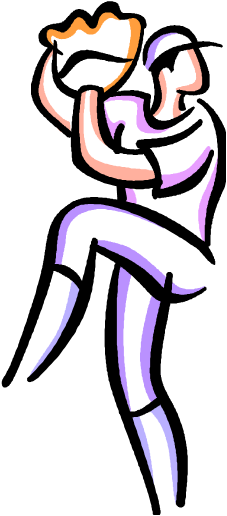 A couple of days ago a friend of mine called to borrow a specific tool. He was going to start a repair to his riding lawnmower and needed a torque wrench. He has a large number of tools already – screwdrivers, saws, sockets, pliers, drills, etc. – that he has previously used to make or repair things around his house. However, on this day and for this lawnmower repair project, he needed something that he did not already have. So what did he do? Well, he started with the first and most powerful tool that he had to find the tool that he was missing. He called someone that he knew. Now it turns out that I was no help that day since I didn’t have a torque wrench. However, if he secretly didn’t want to buy the tool, I could have easily connected my friend with someone else that had a torque wrench to lend.
A couple of days ago a friend of mine called to borrow a specific tool. He was going to start a repair to his riding lawnmower and needed a torque wrench. He has a large number of tools already – screwdrivers, saws, sockets, pliers, drills, etc. – that he has previously used to make or repair things around his house. However, on this day and for this lawnmower repair project, he needed something that he did not already have. So what did he do? Well, he started with the first and most powerful tool that he had to find the tool that he was missing. He called someone that he knew. Now it turns out that I was no help that day since I didn’t have a torque wrench. However, if he secretly didn’t want to buy the tool, I could have easily connected my friend with someone else that had a torque wrench to lend.
There are three lessons that are significant.
1. It is possible to anticipate the need for certain tools. When that is the case, it is best to get them as soon as possible. For example, every homeowner (or mechanic) needs a hammer. Everyone needs an assortment of screwdrivers. Everyone needs a saw of some sort. A person should master these common tools because they are useful in solving many problems.
In competitive intelligence, it is also true that there are common tools that should be identified and acquired early. Although you don’t have to have all of these tools on day one, it is useful to know that you will need them. Here is a partial list by category of some tools that you will likely need.

 I was reading my local newspaper this morning. In the sports section, there was an article extolling the positive impact that the new pitching coach had had on the professional baseball team in my area. All of the pitchers were suddenly pitching better. More strikes, longer outings and more wins seem to be rule instead of the rare exception that we had enjoyed in past years. What had made the difference, the new pitching coach was asked. Was he emphasizing new techniques or trickier pitches? Maybe he was having all of the pitchers exercise more or differently than before? Perhaps it was not only the pitchers but the also the catchers (who usually decide what kind of pitch – fastball, curve, change up – that the pitcher throws) that had improved?
I was reading my local newspaper this morning. In the sports section, there was an article extolling the positive impact that the new pitching coach had had on the professional baseball team in my area. All of the pitchers were suddenly pitching better. More strikes, longer outings and more wins seem to be rule instead of the rare exception that we had enjoyed in past years. What had made the difference, the new pitching coach was asked. Was he emphasizing new techniques or trickier pitches? Maybe he was having all of the pitchers exercise more or differently than before? Perhaps it was not only the pitchers but the also the catchers (who usually decide what kind of pitch – fastball, curve, change up – that the pitcher throws) that had improved? Coke is a valuable brand. It got that way because many years ago there was a vision for the product, an explicit way to market the vision and scrupulous enforcement of the brand that emerged. Brands are powerful shorthand ways that we assign value to or judge the worth of something. They help us cut through the noisy clutter of life to make simpler decisions. If we are associated with a “good” brand, then we find our pathways smooth and clear. Conversely, few things are harder to overcome than a “bad” brand (if they were still being made, would you consider a Yugo?).
Coke is a valuable brand. It got that way because many years ago there was a vision for the product, an explicit way to market the vision and scrupulous enforcement of the brand that emerged. Brands are powerful shorthand ways that we assign value to or judge the worth of something. They help us cut through the noisy clutter of life to make simpler decisions. If we are associated with a “good” brand, then we find our pathways smooth and clear. Conversely, few things are harder to overcome than a “bad” brand (if they were still being made, would you consider a Yugo?). Eight years ago I was diagnosed with a life threatening condition that required surgery. I understood that the surgery would be quite difficult and so I searched high and low for the right surgeon. The doctor that I found was recommended to me. He was personable and seemed competent. I knew that he had been successful in many surgeries and I expected (hoped) that he would do what was necessary for me.
Eight years ago I was diagnosed with a life threatening condition that required surgery. I understood that the surgery would be quite difficult and so I searched high and low for the right surgeon. The doctor that I found was recommended to me. He was personable and seemed competent. I knew that he had been successful in many surgeries and I expected (hoped) that he would do what was necessary for me.